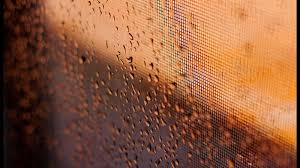
Breaking News
 UPDATE: Israel Launches Gaza Strikes, Peace Plan in Question
UPDATE: Israel Launches Gaza Strikes, Peace Plan in Question
 Gavin Newsom melts down as Pentagon plans to fire artillery shells over California highway during...
Gavin Newsom melts down as Pentagon plans to fire artillery shells over California highway during...
 The watershed moment Trump changed course on Israel after Netanyahu shattered their...
The watershed moment Trump changed course on Israel after Netanyahu shattered their...
 Brazen thieves drop priceless Eugénie crown outside the Louvre in Paris during jaw-dropping...
Brazen thieves drop priceless Eugénie crown outside the Louvre in Paris during jaw-dropping...
Top Tech News
 3D Printed Aluminum Alloy Sets Strength Record on Path to Lighter Aircraft Systems
3D Printed Aluminum Alloy Sets Strength Record on Path to Lighter Aircraft Systems
 Big Brother just got an upgrade.
Big Brother just got an upgrade.
SEMI-NEWS/SEMI-SATIRE: October 12, 2025 Edition
 Stem Cell Breakthrough for People with Parkinson's
Stem Cell Breakthrough for People with Parkinson's
 Linux Will Work For You. Time to Dump Windows 10. And Don't Bother with Windows 11
Linux Will Work For You. Time to Dump Windows 10. And Don't Bother with Windows 11
 XAI Using $18 Billion to Get 300,000 More Nvidia B200 Chips
XAI Using $18 Billion to Get 300,000 More Nvidia B200 Chips
 Immortal Monkeys? Not Quite, But Scientists Just Reversed Aging With 'Super' Stem Cells
Immortal Monkeys? Not Quite, But Scientists Just Reversed Aging With 'Super' Stem Cells
 ICE To Buy Tool That Tracks Locations Of Hundreds Of Millions Of Phones Every Day
ICE To Buy Tool That Tracks Locations Of Hundreds Of Millions Of Phones Every Day
 Yixiang 16kWh Battery For $1,920!? New Design!
Yixiang 16kWh Battery For $1,920!? New Design!
 Find a COMPATIBLE Linux Computer for $200+: Roadmap to Linux. Part 1
Find a COMPATIBLE Linux Computer for $200+: Roadmap to Linux. Part 1
3D Printing Membranes Could Change Water Treatment As We Know It

3D printing has come a long way in the past few years. Printers that once could only produce thick plastic can now churn out flexible material, metal, and now even semi-permeable membranes.
Researchers at the University of Bath assessed 3D printers' ability to work with membranes to evaluate the potential to 3D print membranes in the future, according to a study published online this week in the Journal of Membrane Science.
Membranes are useful in the water treatment industry for reverse osmosis treatment used in desalination and recycled water purification, among other uses. But creating one is particularly difficult, and they can usually only be built as a hollow tube or a flat membrane because of the setup of current manufacturing methods. 3D printing could change all of that.
"Although 3D printing technology is not quite well enough developed to yet produce large scale membranes that will be cost competitive with existing products, this work does signal what the future possibilities are with 3D printing," said Darrell Patterson, director of the Centre for Advanced Separations Engineering at the University of Bath, in a release.
Read more: Self-Assembling Nanoparticles Offer Super-Efficient, Portable Water Desalination
This is the first time the properties of various 3D printing techniques have been assessed and compared to the tools needed to create membranes, according to a University of Bath release.
Patterson said complex porous structures, membranes that could be adapted to odd-shaped surfaces and "membranes based on nature" would all be possible with 3D printing. At least, it could be one day.
Membranes could also be used to remove chemicals from the air prior to it leaving a manufacturing area and chemicals from wastewater prior to the water leaving a facility—and are a lower-energy, lower-cost option to current technologies, the study stated.



